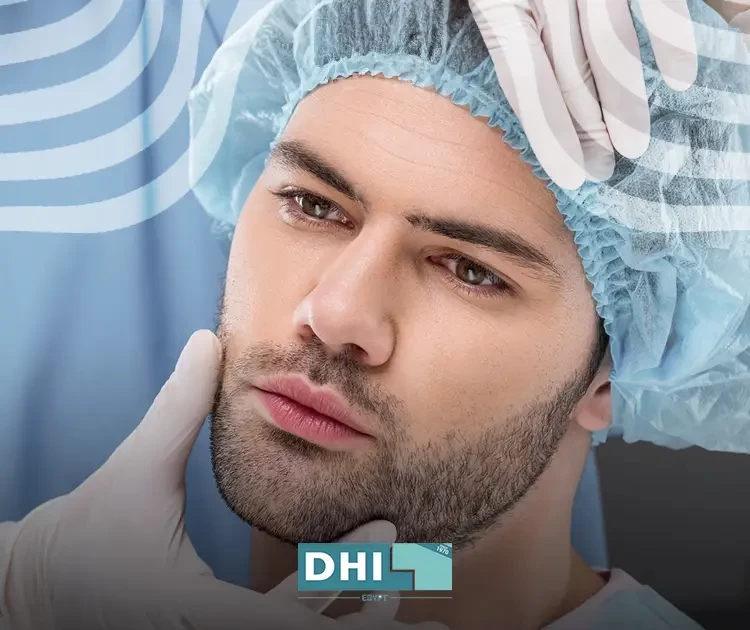Many men desire a thick beard for its masculine and appealing appearance. Beard transplantation is an ideal solution for those who have thin or no beard hair. This surgical procedure helps men achieve their dream of a perfect beard.
In this article, we'll explore the beard transplantation process and how the DHI technique can deliver impressive results. We'll also discuss when to expect results, potential post-transplantation issues, and their likelihood of occurrence, so keep reading.
What is beard transplantation?
Before going into the details of beard transplantation, it's important to understand that it involves transferring facial hair to the beard or chin area to enhance density and fill in gaps. This process entails extracting hair from a densely-haired donor area and implanting it in the desired beard region.
There are 3 main approaches a surgeon can take:
Hair transplantation by extraction (FUE)
This is done by extracting complete follicular units one by one from the donor area and implanting them in the chin area.
Hair transplantation using strip technique (FUT)
In this method, the surgeon cuts a small strip of tissue from the back of the head, removes hair follicles from that tissue, and transplants them to the facial area.
A follicular unit is a small group of several hair follicles that may emerge through the skin through the same exit point.
Direct hair transplantation (DHI)
One of the most advanced and effective techniques in hair transplantation is the use of Choi pens. These pens directly extract and transplant hair follicles, ensuring their strength and health while minimizing their time outside the body. This method is highly effective in restoring natural beard hair density and comes with a short recovery time, minimal bleeding, and better follicle preservation. DHI Egypt specializes in using this technique.
Beard transplantation method using DHI technology
As previously stated, this technique is the most advanced and effective technology in hair transplantation, and we rely on it at DHI Egypt Center. The process of beard transplantation is as follows, and it should be noted that these steps are similar to those of regular hair transplantation:
- The doctor decides on the beard line according to the client's preferences.
- Follicles are carefully selected from the donor area, usually the back of the head or sides.
- A special device is used to extract hair individually from the donor area without leaving scars.
- The recipient area is prepared by creating tiny holes for the follicles.
- Using a Choi pen, the follicles are transplanted into the recipient area.
- The doctor gives instructions for caring for the transplanted beard, which may include avoiding direct contact and using specific products to encourage new hair growth.
The client must adhere to the post-operative care instructions and attend the scheduled appointments to monitor the development of the transplanted hair growth.
also know:
Beard transplant after a month
When will the results of the beard transplant appear?
Clients often wonder when they'll see the results of their beard transplantation. Typically, it takes about 8 or 9 months after the procedure for a full, healthy beard to grow in. However, it's important to understand that the stages of beard hair growth after transplantation can vary slightly from person to person. Factors like the quality of the transplanted hair and how well post-transplantation advice is followed can also affect the results.
Tips after beard transplant
Once you've undergone a beard transplant, the doctor will provide you with some essential home care instructions for the first few days after the operation. These instructions typically include the following tips:
- Sleep on your back with your head elevated at a 45-degree angle to reduce swelling and improve blood flow.
- Avoid touching or scratching the implanted areas to prevent damage.
- Apply antibiotic ointment to the donor and transplant areas to prevent infection.
- Eat a balanced diet rich in protein and vitamins A, E, C, D, B7, and B12 to aid in tissue repair.
- Keep the recipient and donor areas clean and sterile to prevent infection.
- Avoid strenuous activities and bending your head down to minimize the risk of injury.
- Refrain from washing your face for a few days after the procedure, following your doctor's instructions for proper washing.
- Avoid using any products or substances that may irritate the implanted area and cause itching.
Are there problems with chin implants?
Like any surgical procedure, there may be side effects or problems, and some of the problems with chin implants after the operation include:
- Swelling and redness in the implanted area, which usually subside with time.
- Tightness and numbness in the transplanted area, which typically disappear over time.
- Temporary crusts in the transplant area, which gradually vanish.
- Scarring in the donor area, which may be covered by normal hair growth. FUE technique leaves small scars, while FUT technique leaves a single long scar at the back of the head.
If crusting, redness, swelling, or irritation persists for a prolonged period after a few weeks, you should inform your doctor for advice.
It's important to mention that beard transplantation using the DHI technique has fewer issues with chin transplantation and delivers superior results.
In conclusion, if you desire a full and appealing beard, the DHI beard transplant method could be just what you need. Consult with our skilled hair transplant specialists at DHI to see if it's the right option for you. Schedule your consultation today and take the first step towards achieving the beard you've always wanted.

